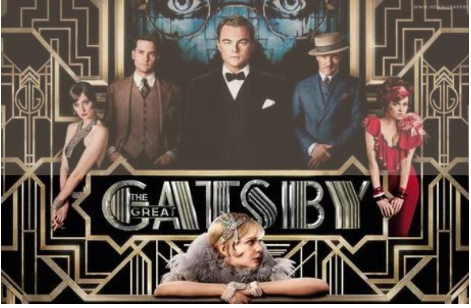
Exploring the Timeless Brilliance of “The Great Gatsby”
“The Great Gatsby” is a literary gem penned by the American writer F. Scott Fitzgerald in 1925. At its heart, the novel tells the story of Jay Gatsby, a mysterious and wealthy man living in New York during the dazzling era of the Roaring Twenties. Narrated by Nick Carraway, the story unravels the complexities of Gatsby’s ill-fated love affair with Daisy Buchanan and the tragic consequences of his pursuit of a relationship with her.
The Setting and Historical Context
Set primarily in New York City in 1922, “The Great Gatsby” unfolds in the fictional suburbs of East Egg and West Egg. These enclaves symbolize the social divisions and opulence of the time, with the ominous Valley of Ashes serving as a stark contrast—a desolate stretch connecting the Eggs to the city, characterized by industrial waste. The historical backdrop of the 1920s, known as the Roaring Twenties, is pivotal to understanding the novel.
Interestingly, there are striking parallels between Fitzgerald’s own life and the narrative of “The Great Gatsby.” Nick Carraway’s background and social status are drawn from Fitzgerald’s personal experiences, and the settings of West Egg and East Egg are inspired by the locations where Fitzgerald and his wife, Zelda, resided.
Characters and the Significance of Perspective
“The Great Gatsby” introduces several significant characters, each representing distinct ideas within the narrative:
- Nick Carraway: The narrator and Daisy Buchanan’s cousin.
- Jay Gatsby: The enigmatic central figure of the story with a mysterious past.
- Daisy Buchanan: Gatsby’s love interest, trapped in an unhappy marriage.
- Tom Buchanan: Daisy’s husband, characterized by his unkindness and jealousy.
- Myrtle Wilson: Tom Buchanan’s mistress, living in the desolate Valley of Ashes.
- George Wilson: Myrtle’s husband, struggling with poverty and a troubled marriage.
- Jordan Baker: Daisy’s friend and a wealthy socialite with whom Nick forms a romantic connection.
- Meyer Wolfsheim: A character involved in illegal business dealings with Gatsby.
- Owl Eyes: A minor character symbolizing a godly presence at Gatsby’s extravagant parties.
While all these characters contribute to the richness of the narrative, the story primarily revolves around Nick Carraway and Jay Gatsby.
Conclusion
In conclusion, “The Great Gatsby” by F. Scott Fitzgerald remains an enduring masterpiece that continues to captivate readers nearly a century after its publication. The novel’s exploration of the contrast between illusion and reality, as well as its contemplation of the passage of time, renders it a relevant and poignant commentary on modern society.
Fitzgerald’s exquisite and haunting writing style, combined with vivid imagery and complex characters, positions “The Great Gatsby” as essential reading for anyone who appreciates literature and seeks to delve into the intricacies of the human condition. It is, without a doubt, a quintessential representation of the Jazz Age and Fitzgerald’s literary brilliance.
FAQs about “The Great Gatsby”
Q1: What is the main message of “The Great Gatsby”?
The main message of “The Great Gatsby” is that the American Dream, often associated with wealth and success, is ultimately unattainable. Despite Jay Gatsby’s accumulation of wealth and social status, his dream of a future with his one true love, Daisy Buchanan, remains elusive.
Q2: Why is “The Great Gatsby” so famous?
“The Great Gatsby” is renowned for embodying the American spirit and the desire for self-reinvention. It is often regarded as a quintessential American novel that explores themes of ambition, decadence, and disillusionment, making it a compelling and thought-provoking read.
Q3: Do Gatsby and Nick fall in love in the novel?
While interpretations of their relationship may vary, some readings suggest that Nick Carraway is not just fond of Jay Gatsby but may be in love with him. However, it is also open to interpretation whether Gatsby reciprocates these feelings or is as repressed as Nick, each pursuing unattainable romantic interests to avoid confronting their true desires.
Q4: How did Gatsby become so rich?
In the novel, it is implied that Jay Gatsby acquired his wealth through illegal activities, specifically bootlegging during the Prohibition era in the United States. His immense wealth and extravagant lifestyle are central to the narrative.







